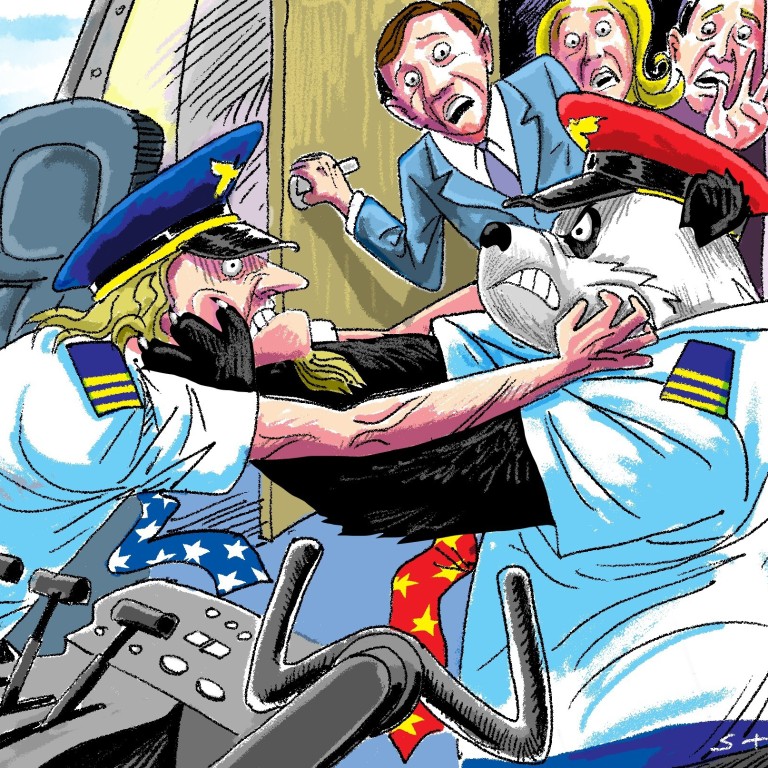
US-China power struggle: rest of the world must come together to stand up for themselves
- Other countries prefer to stay neutral amid the intense jockeying for influence between China and the US. The only way they can achieve that is to join hands in pushing back attempts by either power to use them as a pawn against the other

00:59
Chinese company finishes longest tunnel for Indonesia's Jakarta-Bandung high-speed railway
As America’s borrowing needs grow while China aspires to internationalise its currency, other countries will soon face growing pressure from Washington and Beijing regarding the currency with which they choose to conduct their trade and the composition of their foreign exchange reserve assets.
China’s digital currency will end threat of US dollar trap
With the two powers at loggerheads, sandwiched countries will either pay an ever-growing price in sovereignty and development or they could aggregate into a new geopolitical bloc in support of non-alignment and rejection of both America’s and China’s challenges to the status quo. They should choose the latter.
Throughout history, small countries have shied away from standing up to great powers. “The strong do what they can and the weak suffer what they must,” wrote Thucydides.
But if recent years taught us anything, it is the rapid speed at which the balance of power between the weak and the strong in society can be upended. Big media, big government, big finance and other Goliaths have all learned the hard way about the power of collective action.

This can also happen in the international arena with the formation of a neutrality coalition. This does not mean breathing new life into the non-aligned movement created during the Cold War, which presents itself as a platform for fighting colonialism and other injustices, but in reality has been mostly a stage for West-bashing.
A new non-aligned movement should not be about airing grievances, nor should it be a magnet for disenfranchised and non-democratic countries. Rather, it should be a hub for rich and poor, southern and northern countries – even those that consider themselves true friends of America or China – who agree that a Sino-American cold war, let alone a hot one, is the last thing the world needs.
The key principle of such a movement is neutrality in the event of a US-China conflict. This means rejection of any attempt by either power to unilaterally change the status quo in Taiwan and the South and East China seas, or to disrupt freedom of navigation along maritime trade routes.
It also means rejection of any attempt to turn a non-aligned country into a staging ground for weapons deployment or to deliberately embroil it in military conflict.

02:32
Washington’s hardened position on Beijing’s claims in South China Sea heightens US-China tensions
Neutrality should also be extended into the realms of technology and data. Non-aligned countries should reject any attempt to steal, misuse or weaponise data by any state actor. At the same time, they should protect the open internet and reject any attempt to force governments or corporations to alter their supply chains and technology choices for non-commercial reasons.
Huawei is dead. Long live Huawei?
They should also claim their right to develop their national infrastructure as they see fit and to transact in the currency of their choice. Those countries should oppose political meddling by any foreign power and reject the use of sanctions against smaller countries as a way to advance geopolitical agendas.
Finally, non-aligned countries should resist turning international organisations into recruiting grounds in the Sino-US rivalry. The Biden administration’s re-engagement with international organisations is laudable, but those organisations should always be left to focus on their core missions, not become tools in imperial squabbles.
Neither Washington nor Beijing will be thrilled about the re-emergence of non-alignment. The formation of such a bloc could complicate the Biden administration’s efforts to assemble an international coalition to counter China. Beijing will see it as yet another obstacle to its global ascendance.
The state-controlled newspaper Global Times has already called the idea of a new non-aligned movement “simplistic and unrealistic”. For small and medium-sized countries, there is no better validation of the need for collective neutrality than a snub from the two antagonists.
The world today can be compared to a large passenger plane with two co-pilots, China and the US, jointly contributing to more than half of the world’s economic growth. In the cabin, 194 passengers are seated – the rest of the world’s countries – mostly in economy class; some in business.
In mid-air, a rapidly escalating argument erupts between the co-pilots. If not contained, a physical fight might soon ensue. The plane is losing altitude, and the passengers can no longer afford to remain quietly in their seats. It’s time for them to storm the cockpit.
Gal Luft is co-director of the Institute for the Analysis of Global Security (IAGS). His latest book is “De-dollarisation: The Revolt Against the Dollar and the Rise of a New Financial World Order”

